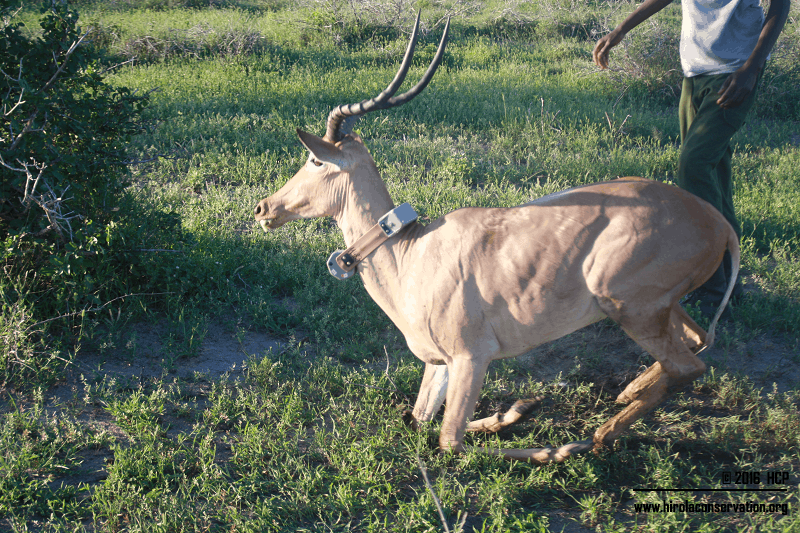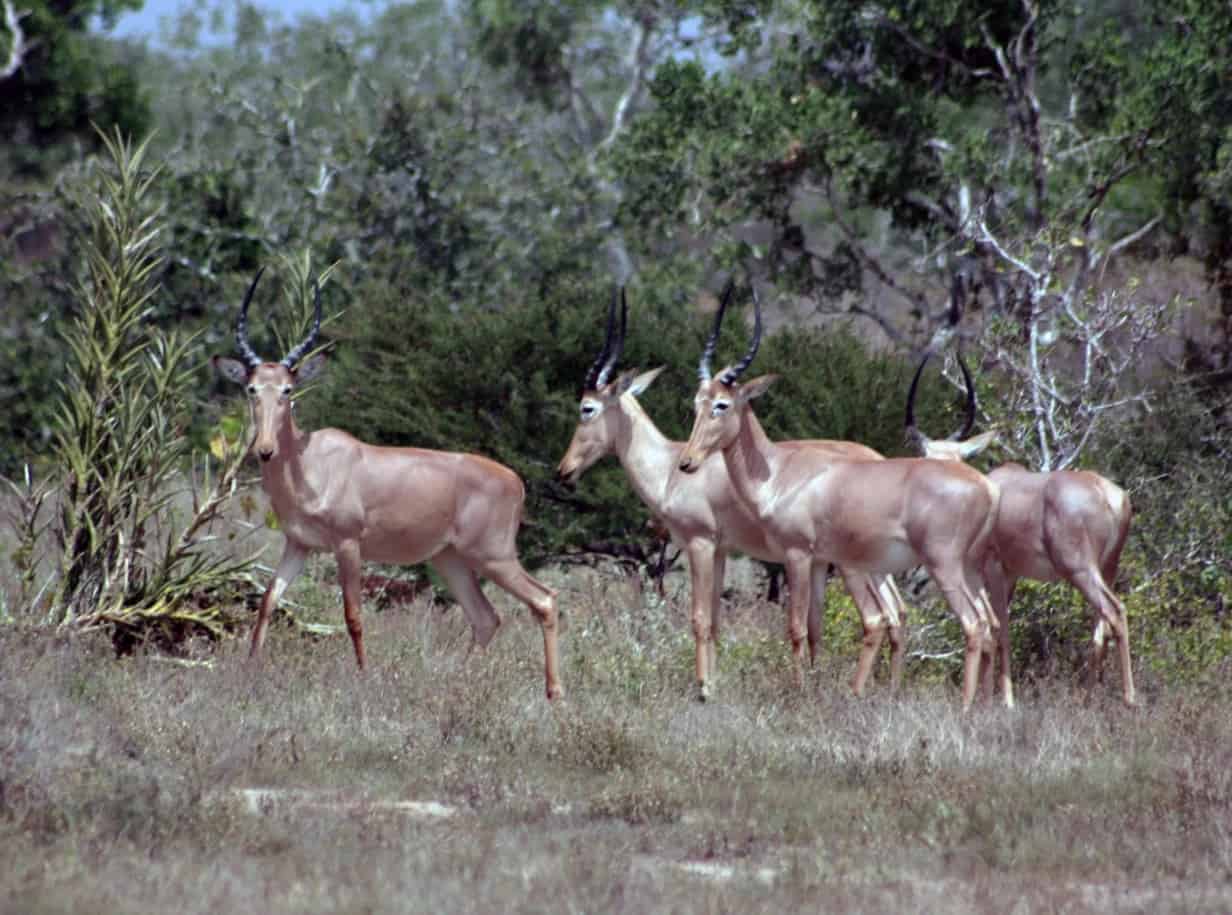How to save Hirola antelope

Why hirola are the world’s most endangered antelope, and what it will take to save them
In this post Jacob Goheen and Abdullahi Ali discuss their recent paper ‘Resource selection and landscape change reveal mechanisms suppressing population recovery for the world’s most endangered antelope‘.
The arid climate of eastern Kenya is harsh and daunting to outsiders. In this part of Kenya, however, lie the only known haunts of the hirola, one of the most beautiful—and the most endangered—antelope in the world. The hirola (a Somali word for “beige”) is a slender, shy animal with a long face and spectacled eyes. They graze in groups of females led by a dominant male.
Historically, the hirola was endemic to the Kenya-Somali border; today, there are only a few isolated populations in eastern Kenya. As the world’s most endangered antelope, the hirola has declined from over 15,000 individuals in the 1970s to 500 individuals in recent years. The reasons for this decline remained unclear for many years, and conservationists guessed that a combination of loss of grasslands and predation pressure were responsible for the low abundances and geographic-range contraction of contemporary populations.

Because hirola occur exclusively outside formally protected areas, research attention was scant, and knowledge gaps about its biology persisted. My fellow Somalis have a reverence for hirola (they are indicators of good grazing areas for cattle and other livestock), and I have watched their numbers decline since I was a small boy. As a young scientist dedicated to conservation, I decided to tackle this challenge and dive head-first into field efforts to save hirola. The chance came when I met Dr. Jacob Goheen, a professor with a passion to train African scientists working on wildlife ecology and conservation in their home countries. In collaboration with Dr. Goheen and through the University of Wyoming’s Program In Ecology, I embarked on dissertation research to reveal the factors underlying chronically low numbers of hirola. My collaborators and I sought to answer two questions: (1) had hirola populations experienced habitat loss via tree encroachment?; and (2) if tree encroachment occurred, did this result in intensified predation pressure on hirola?
We discovered that, between 1985 and 2012, tree cover increased by >250% across the historical range of hirola. Tree encroachment was associated with a 98% decline of elephant populations, a 74% decline in cattle populations, an increase in browsing livestock (mostly goats and camels) by 327%, and a significant reduction in rainfall. Although hirola avoided tree cover, there was no evidence that predation on hirola increased with increasing tree cover.
The extinction of hirola would be the first of a mammalian genus on the African continent in modern history. The current low numbers of hirola result largely from habitat loss through tree encroachment, exacerbated by elephant extirpation, overgrazing, drought, and maybe fire suppression. Guided by this research, the Hirola Conservation Program is working to implement a combination of rangeland restoration efforts (including conservation of elephants, manual clearing of trees, and grass seeding), increased enforcement of an existing protected area (Arawale National Reserve), and reintroductions to enhance recovery for this globally endangered species. The international community has an important role to play in supporting these efforts to bolster hirola numbers in eastern Kenya.
